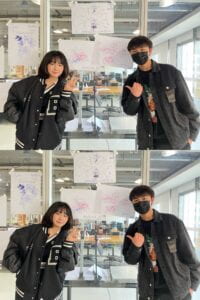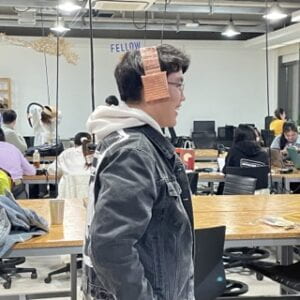I first followed the instructions to build the circuit transistor should be replaced by a potentiometer, thus measuring and plotting the values with AnologRead.
In the beginning, I was missing a wire because of a connection error, so the way my motor turned was very unusual, it would not be controlled by the sliding rheostat, but was pumping on its own without regularity. So we checked the wire connection, found the problem, and solved it in time.
The next step was that we connected the two machines that Sebastian and I built separately to make the final version.



Then I changed the code with the function diagram and we were surprised to find that we could control the pen with AnologWrite’s console logging potentiometer value
Question 1: What kind of machines are you interested in building? Add a thought about using actuators, the art of digital manipulation.
As for me, I think the type I’m interested in is iterations that might replace very basic human labor, which requires a lot of patience. I think actuators can help people do repetitive tasks and make our lives easier. Because it can translate energy sources into physical-mechanical motion, it can maintain both linear motion and manipulation, as well as circular motion, without human labor. The art of digital manipulation is creative and useful. Photographic manipulation, digital art, and generative visual art can all be considered digital manipulation. It is creative. It uses digital technology as a presentation process. However, algorithms are considered cold and hard, on the other hand, art is something soft and warm. The combination of both algorithm and art makes the creation unique and special. It is also useful. Digital manipulation of art allows art forms to be created randomly. Humans can have deviations in creating their work, however, computers may not. If you set it up with a random code, the entire art can be generated randomly, without human bias or thought.
Question 2: Choose an art installation mentioned in the reading ART + Science NOW, Stephen Wilson (Kinetics chapter). Post your thoughts about it and make a comparison with the work you did during this recitation. How do you think that the artist selected those specific actuators for his project?
The work in the reading “The Drumming And Drawing Subhuman, 2000” really caught my eye. Both the robot and my work contain motors, and they can both be involved in the process of creating a work of art; the robot creates the music, while my drawing machine creates the drawing. The difference is that the robot is automatic, while my drawing machine must be controlled by a human. The artist chose the actuators that allow the robot to move its arms and create music with the sound of drums.













